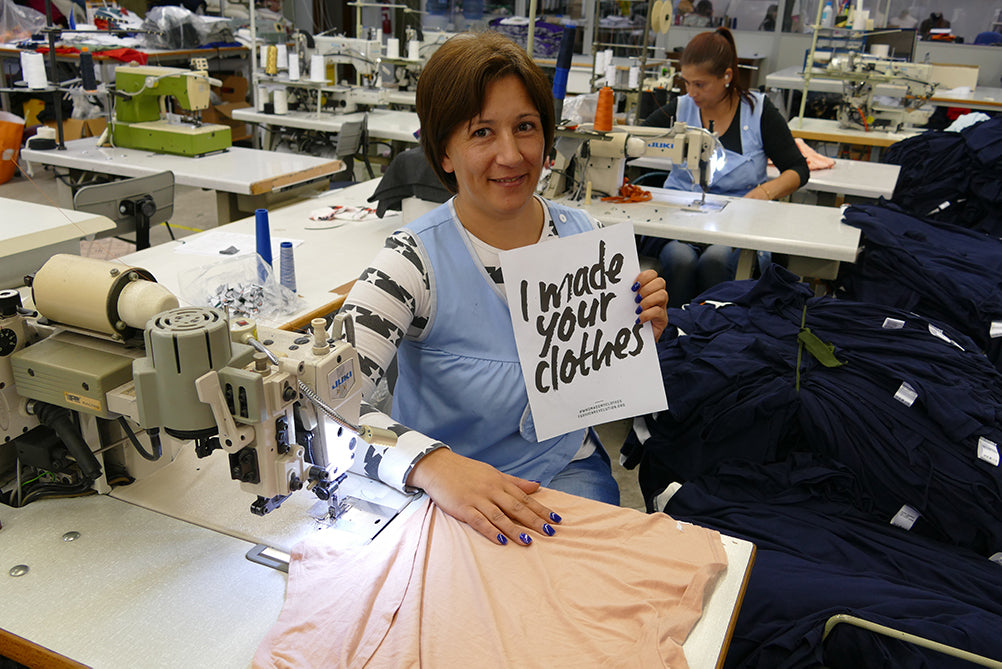On November 12th, 2012, a fire broke out in the Tazreen Fashion factory in Dhaka, Bangladesh, killing at least 117 and injuring 200+. This disaster is known as the Dhaka Fire, the worst accident in fashion history. We consumers are always looking for a good cheap deal, and we forget that are clothes are still made by someone, somewhere.
If you knew that your garment was made by a person earning below a living wage in unsafe working conditions with no social benefits, would you still buy it because it is cheap? That is the question you must consider and answer when you buy a t-shirt for €5 or a pair of jeans for €10.
This tragic accident rightfully put the spotlight on the fashion industry and its global brands who were producing their clothes in lower cost countries, but without much regards for the working conditions and quality of life the garments workers in those factories.
Where did the blame lie? Given human nature and capitalist markets, factory owners were arguably responding to the intense cost pressures from global brands looking for cheap production line to supply their Western markets. Workers well-being and safety were simply not a priority for anyone, not just factory owners, but also fashion brands and consumers. As the saying goes, far for the eyes, far from the heart, and the same goes for caring about the people making our clothe in a land far far away.
But a small group of people wanted to change that. They believe that we consumer would not want to knowingly benefit from an exploited group, and they founded Fashion Revolution, launching the “Who made my clothes?” campaign. They ask people to ask their favorite brands on social media to tell them who made their clothes. And it worked. By 2018, over 2000+ brands responded, advocating for full transparency in the garment supply chain, so you know who made your clothes. Fashion Revolution now publishes a transparency index report .
When we launched LESPIRANT, a blunt guiding principle to setup our business was that nobody should get “screwed” along our supply chain, not mother nature, not the fiber and fabric workers, not the garment workers. To achieve this goal, we tried to keep our entire supply chain in the EU and selected a sustainable fabric and biodegradable packaging. We wanted all workers along our supply chain to receive at least 4 weeks of paid vacation, 3 months of paid maternity leave and health insurance. We are not opposed to production in a lower cost country, but as a startup, we simply didn’t have the resources to demand and monitor EU-like labor and environmental standards on suppliers outside the EU. However, major brands certainly do, considering how large their marketing budget is...
Now we will also tell you who made your LCut and show your our entire supply chain.
Many advised us against it, that it is giving away a competitive advantage. But it is more important for us to gain your trust. You don't just have to take our word it, now you will know where every part of your LCut it made and you can sleep soundly that no exploited worker, child, or 9-month pregnant woman worked on the LCut you purchased from us.
The First Edition LCut was made by:
| Fiber |
Supplier: Lenzing Website: https://www.lenzing.com/en/products/tencel-tm/ Address: Werkstraße 2 |
| Fabric |
Supplier: Bugis Website: Burgis.fr Address: 34 rue La Fontaine |
| Manufacturing |
Supplier: Siena Website: Siena.pt Address: Rua de Macabio, nº28 |
| Packaging |
Supplier: Extrapack OOD Website: https://bags.bg/En/Degralen-degradable/ Address: ul. Inzhener Georgi Belov 20A |

